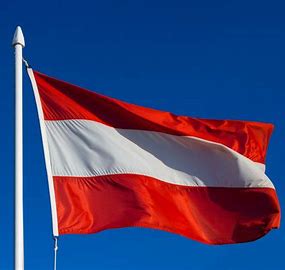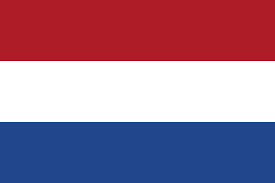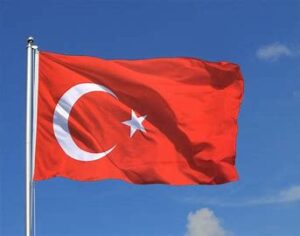
New Elections in the OECD Side-by-Side Package
On January 5, 2026, the OECD Released Guidance on amendments to the Pillar 2 rules for the Side-by-Side Tax Package. This article looks at a number of the new elections that arise from this.
Importantly, unlike when determining the revenue for the purposes of the revenue threshold, consolidation adjustments that eliminate intra-group transactions are excluded.
The financial accounting net income or loss is based on the accounting standard used to prepare the consolidated financial statements.
Key Takeaways of the Financial Accounting Net Income or Loss
• There is no reduction in the financial accounting income or loss figure for any minority interest in the constituent entity held by other entities (this is instead taken into account when allocating any top-up tax). For more information, see Allocation of Top-Up Tax.
• Because the financial accounting income or loss figure is based on the profit and loss account, any amounts included in the Other Comprehensive Income section of the financial accounts are generally excluded. Other Comprehensive Income generally consists of items that impact the balance sheet but that aren’t reported in the profit and loss account.
This would include things like unrealized gains or losses on derivatives or retirement benefit plans and foreign currency translation adjustments.
• Although Other Comprehensive Income is generally excluded from the financial accounting income figure, revaluation method gains or losses that are included there are included.
• Consolidated financial accounts will have been prepared based on a materiality threshold. This threshold also applies to the Pillar Two GloBE income calculation.
• If the Constituent Entities’ financial accounts are prepared using an accounting standard different from the Ultimate Parent Entity (UPE) that prepares the consolidated accounts, Article 3.1.3 of the OECD Model Rules provides that another accounting standard may be used if:
o the financial accounts of the constituent entity are maintained based on that accounting standard;
o the information contained in the financial accounts is reliable; and
o permanent differences in excess of EUR 1 million arising from the application to transactions of a particular standard that differs from the UPE’s financial standard, conform to the UPEs accounting standard.

On January 5, 2026, the OECD Released Guidance on amendments to the Pillar 2 rules for the Side-by-Side Tax Package. This article looks at a number of the new elections that arise from this.

On January 5, 2026, the OECD Released Guidance on amendments to the Pillar 2 rules for the Side-by-Side Tax Package.

On December 23, 2025, Germany enacted a law to amend the Minimum Tax Act. This follows the two previous discussion drafts and now includes the January 2025 OECD Administrative Guidance and DAC9 amendments.

On December 23, 2025, Austria published the Tax Amendment Act 2025 in its Official Gazette. This includes amendments to aspects of the December 2023, June 2024 and January 2025 OECD Administrative Guidance, as well as DAC 9 implementation.

Part III of the Dutch Year-End Decree 2025 (published in the Official Gazette on December 23, 2025) amends the Minimum Tax Executive Decree 2024 for aspects of the December 2023, June 2024, and January 2025 OECD Administrative Guidance.

On December 30, 2025, IRAS issued further details on the Pillar 2 registration process. The registration portal is to be open from May 2026, however, a draft registration form and explanatory notes have been issued.

On December 26, 2025, Turkey published the Communique on the Minimum Tax Law. Whilst Turkey has enacted its Minimum Tax Law, a lot of the detailed application of the GloBE rules was left to a further Regulation. This Communique therefore provides for the detailed rules for the implementation of the GloBE rules in Turkey.

On December 19, 2025, the Danish Official Gazette published an Executive Order providing for GIR information reporting requirements and on December 17, 2025, the Danish Official Gazette published Law No. 1643 to amend the Minimum Tax Act.

On December 23, 2025, Liechtenstein’s Official Gazette included amendments to the Pillar 2 law and regulation to implement domestically the OECD provisions for the exchange of information in the GloBE Information Return (GIR) under the multilateral agreement between competent authorities on the exchange of GloBE information (GIR MCAA).
| Cookie | Duration | Description |
|---|---|---|
| cookielawinfo-checkbox-analytics | 11 months | This cookie is set by GDPR Cookie Consent plugin. The cookie is used to store the user consent for the cookies in the category "Analytics". |
| cookielawinfo-checkbox-functional | 11 months | The cookie is set by GDPR cookie consent to record the user consent for the cookies in the category "Functional". |
| cookielawinfo-checkbox-necessary | 11 months | This cookie is set by GDPR Cookie Consent plugin. The cookies is used to store the user consent for the cookies in the category "Necessary". |
| cookielawinfo-checkbox-others | 11 months | This cookie is set by GDPR Cookie Consent plugin. The cookie is used to store the user consent for the cookies in the category "Other. |
| cookielawinfo-checkbox-performance | 11 months | This cookie is set by GDPR Cookie Consent plugin. The cookie is used to store the user consent for the cookies in the category "Performance". |
| viewed_cookie_policy | 11 months | The cookie is set by the GDPR Cookie Consent plugin and is used to store whether or not user has consented to the use of cookies. It does not store any personal data. |